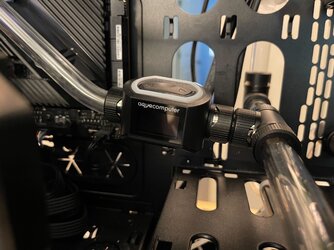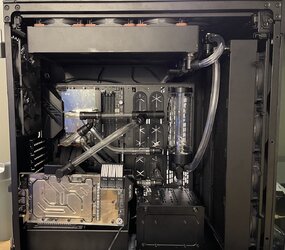- Joined
- Sep 20, 2001
- Location
- Bakersfield, CA
You'll flush the air as long as your water flow is high enough. With the thick rads it might be better with the fittings on top actually.
Welcome to Overclockers Forums! Join us to reply in threads, receive reduced ads, and to customize your site experience!
I think the best way is for trial error build how you think then fill loop up normal water run it see if it works . Then change what you dont like as its only water no loss or money spent on coolant .

Can we see pic now of it all in place please

Maybe. Certainly it's easier to see with water, but the gauge dropping should be pretty obvious too.Using it with just air finding a leak would be very difficult.
Maybe. Certainly it's easier to see with water, but the gauge dropping should be pretty obvious too.
